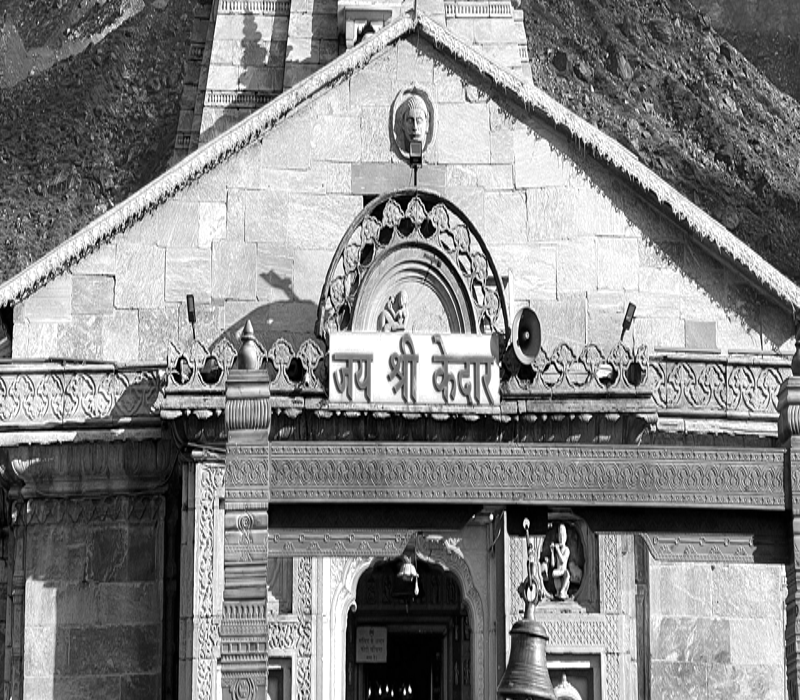- Offices: Dehradun | Dwarka New Delhi
The Alaknanda River is a major tributary of the Ganges (Ganga) River in the northern part of India. It flows through the picturesque state of Uttarakhand, originating in the Himalayas and merging with various tributaries along its course before joining the Bhagirathi River at Devprayag, where the confluence is considered the official beginning of the sacred Ganges River. Here is a deep dive into its journey, significance, and the regions it traverses.
Origin and Early Course
The Alaknanda River originates near the Satopanth Glacier, located at an elevation of approximately 3,600 meters (11,800 feet) near the Indo-Tibetan border in the Chamoli district of Uttarakhand. The glacier lies close to the sacred peaks of Nanda Devi and Kamet. The river’s source is highly revered, as it is believed that Lord Vishnu took a bath here at a spot called "Badrinath," which is also a significant pilgrimage site for Hindus. This stretch of the river is characterized by rugged mountainous terrain, cold temperatures, and scenic beauty, with waterfalls and dense forests lining the banks.
The river flows southeast from its origin, passing through a series of dramatic gorges, valleys, and villages. As it descends from the glaciers, it gains momentum and volume from melting snow and glacial runoff, becoming a powerful mountain river by the time it reaches the valleys. Along its initial course, the Alaknanda is joined by several smaller streams and rivers, including the Saraswati and Dhauli Ganga rivers, enhancing its flow.
Major Tributaries and Confluences (Panch Prayag)
As the Alaknanda River flows downstream, it merges with several other rivers at sacred confluences known collectively as the "Panch Prayag" (the five holy confluences). Each Prayag holds spiritual significance in Hinduism, and pilgrims travel along the route to visit these sites. The five Prayags are:
- Vishnuprayag
- Nandaprayag
- Karnaprayag
- Rudraprayag
- Devprayag
Geographic Route and Landscape
The Alaknanda River flows for approximately 190 kilometers (118 miles) through the mountainous regions of Uttarakhand before it merges with the Bhagirathi at Devprayag. The journey is both challenging and magnificent as the river cuts through steep valleys, lush forests, and rocky landscapes. Due to its origin in the Himalayas, the river experiences significant seasonal changes, with high volumes of water during the monsoon season, often leading to flooding. During the winter, snowfall in the higher reaches reduces the flow, though the river still maintains its steady journey toward the plains.
Throughout its course, the Alaknanda flows past numerous small towns and villages, providing water, sustenance, and livelihood to the local populations. The river basin supports agriculture in the valleys, where crops like rice, wheat, and vegetables are cultivated. The Alaknanda’s power is also harnessed for hydroelectricity, with several dams and projects along its route, such as the Vishnuprayag Hydroelectric Project and others near Badrinath and Chamoli, to generate power for the surrounding regions.
Cultural and Religious Significance
In Hinduism, rivers are considered sacred, and the Alaknanda River holds a special place. It is regarded as a manifestation of the goddess Alaknanda, a form of Ganga, making its waters holy. Bathing in the river is believed to purify one’s sins, and it is common for pilgrims to take ritual baths at various points along the river, especially at the Prayags. The entire region through which the Alaknanda flows is dotted with temples, shrines, and ashrams, and the river itself is seen as a divine presence blessing the land and its people.
The river’s association with the pilgrimage site of Badrinath, one of the four Char Dham (four abodes) of Hinduism, further enhances its sanctity. Thousands of devotees visit Badrinath every year, many of whom travel along the river, stopping at the Prayags to perform rituals and seek blessings. The Alaknanda’s journey symbolizes a spiritual path, where obstacles and challenges ultimately lead to a higher purpose or merger with the divine Ganga.
The Alaknanda River’s journey from its glacial source to its confluence with the Bhagirathi River at Devprayag is a testament to the power and beauty of nature. Along the way, it nurtures the land, supports diverse communities, and holds deep spiritual significance for millions of people. Flowing through some of the most breathtaking landscapes in India, the river weaves through mythology, ecology, and human history, becoming more than just a waterway—it is a sacred life force.
For pilgrims and nature lovers alike, the Alaknanda is a river of reverence, resilience, and renewal. Its journey is not just a physical descent through mountains and valleys but a reminder of the interconnectedness of nature and culture. With sustainable practices and respect for its sacredness, the Alaknanda River can continue to inspire and sustain generations to come.

